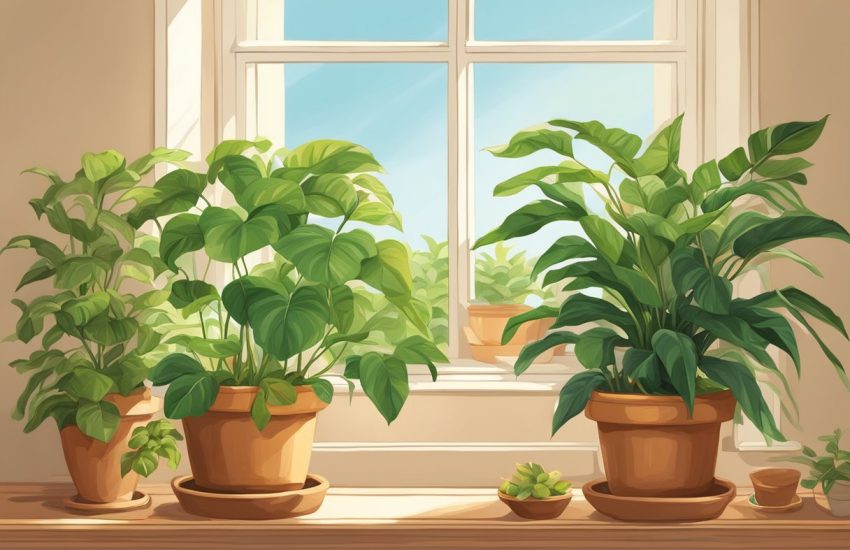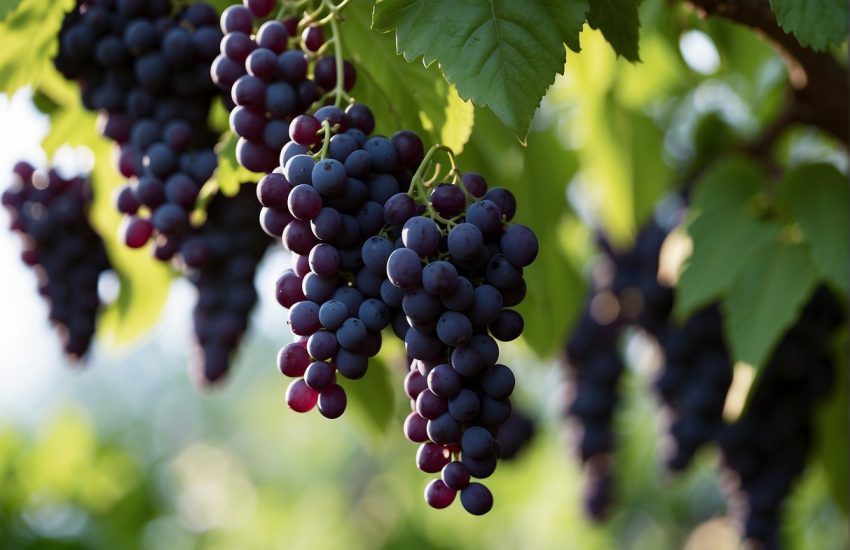Making a Naturescape Plan
To avoid confusion, second guessing and simply stated, headaches, a plan is a cherished item. It is perhaps the single most important item in your naturescaping effort. While a written plan is best, you may be able to get by with a “mental” plan, depending on how your mind works.

On this page, we present one method of achieving a naturescaping plan, i.e., deciding what to plant where. Our goal here is to present enough information to empower you to make a plan that works for you and your situation. Recall that the plan is a place to start and can be tweaked as you progress. Note also that despite our efforts below, there are many considerations in making a plan and you may desire to engage the assistance of a design professional. So … let us dive in.
On the previous page, you were introduced to the idea of "outdoor living space" and you made a baseline plan. The baseline plan indicated the various areas of your yard (based on use), how to get from one area to another, and which areas would be naturescaped. On this page, we will address making the plan for the latter – the naturescape areas.
In general, a plan will show the type of plants to be planted and where they are to be planted. A plan may also indicate the relative size of each plant, particularly the large ones. This may be done by placing a dot or small circle that represents the trunk/crown and a larger circle that represents the average diameter, for example, the 20 year size is often used in conventional landscape design. For smaller "herbaceous" plants, there may not be sufficient space to indicate each plant. In this case, one may make some other notation that suggests the general placement, species and quantity (either of individual plants or combinations of plants.
To begin the process, we suggest that you have your baseline plan and a list of common native plants and their attributes. The list can come from the Regional Plant Lists provided here, from a local nursery or community service organization or from another source or compilation you have found/developed.
Our simple three step approach is effectively selecting and placing your trees first (step one), then selecting and placing your shrubs (step two), followed by selecting and placing your herbaceous plants (step three). Not so intimidating, eh?
- Select and place your trees first
Due to their size and the influence they will have on your site, place your trees first. The selection process can begin with eliminating those trees that would not work well on your site – too large, don’t meet site conditions, etc., and then selecting your favorite(s) among those that remain. Consider the size of your lot, the location of structures and utility lines and how large of a tree you would like. Size might eliminate several candidates. Next consider whether an evergreen or deciduous tree is appropriate based on what is available as a native, whether you want shade in summer only, and which views you may want to block. This eliminates more trees, often leaving you with a few from which to choose. Next confirm that the trees you like are OK with the sun, water and soil conditions of the site. Normally, this is a non-issue because, in general, the trees evolved to grow in your location. There may, however, be some exceptions, for example, a forest understory tree might not like full sun. If you have any concerns, check the Regional Plant List or a field guide or search the web. - Next select your shrubs
Like trees, shrubs are woody plants. In contrast to trees, however, shrubs tend to be smaller and multi-stemmed (not a single trunk). Using a plant list, consider the sun, shade, soil and moisture conditions of your site. Begin selection based on shade, sun and mixed-light conditions, noticing that some shrubs grow in multiple light conditions. Once in the right light category, select the characteristics that you like – evergreen/deciduous, color, food, habitat, etc. With these shrubs (and the herbaceous plants below) you are effectively filling-in the space between one tree and the next and between the trees and other areas of the landscape – turf area, pathways, structures, garden. Note shrub height, selecting smaller shrubs if you’d like to taper down in transition from one zone to the next.
As to arrangement, as a general rule, we suggest planting an odd number of any given shrub and “mixing it up,” randomly planting your shrubs. They will let you know if the are happy or not. Best to simply put them in the ground, water them through the first summer or two, and see what happens. You can plant more of the plants that did well, remove those that did not, and try some other plants, if you’d like.
Remember, in all of this, there is no right or wrong steps. Try and learn, and try again. It can be a fascinating journey.
- Then select your herbaceous plants
Herbaceous plants – perennials and annuals – are smaller, non-woody plants that typically go dormant in summer drought and/or during winter, particularly in the north.
Similar to the approach with shrubs, select your herbaceous plants based on light, soil and moisture requirements, primarily light requirements. Pick sun-liking plants for sun and the converse for shade, noting that many plants tolerate partial shade or sun.
Next look at growth characteristics. Note that some herbaceous plants are good at spreading out and filling in a space, while other do not spread considerably, yet are quite attractive in bloom. This latter group we’ll refer to as the "accent" plants, and there are often bulb plants such as lilies, trillium and the like. We recommend planting plants that will provide you some coverage and then peppering them with accent plants.
Plant what you like (and what you can find in nurseries and/or legally collect), and see what happens.
It is important to recognize that in the digging and planting, the bare earth will be exposed. Opportunistic plants, mostly weeds, will sprout from any exposed earth. Therefore, it is important to cover exposed earth with a wanted plant or mulch, straw, or glass clippings, etc.
One of the last considerations in tree placement is whether to plant trees individually or in a small group, i.e., a “grove.” Some trees, such as aspen, birch, alder, tend to grow in small groups. Thus, to encourage a nature look, it is best to plant more than one of these trees. If in doubt, ask nursery staff or consult a field guide as to whether plants tend to grow in groves. The trees in your “grove” may be tightly or loosely distributed, based on your preference.
While other trees may be planted individually, it is still a good idea to plant more than one, if your space permits. This creates a more natural setting, allowing trees to reproduce and eliminates a collection of individual specimen – the natural history museum or “half of Noah’s Ark” look.
Lastly, with placing your trees, recognize that they will grow in over time. Either be patient or over plant with the idea of culling some back as they grow into each other.
Other considerations in designing a naturescape include:
- Sunlight/Shade. Notice the path of the sun relative to your building. By leaving your building "exposed" to the sun you can achieve passive solar heating. An appropriately placed tree, on the other hand, can significantly lower an air conditioning bill or simply provide a deliciously cooler summertime house. A deciduous tree permits passive solar heating in the winter and cooling shade in the summer.
- Culling. If one or two trees of a certain species are desired in a mature naturescape, it may be desirable to plant several trees of that species initially and selectively remove trees as they grow out. The photograph below shows several young hemlocks filling-in a clearing. Only one or two will ultimately survive. We can implement and manage the same process. By doing this, we cover the amount of ground that the mature trees will cover, and don’t have to worry about weeding or other maintenance concerns in that area. When one of the small tress looks particularly stressed, we remove it (and perhaps we begin removal prior to signs of stress, to selectively thin in a manner that retains the trees we want).
- Stormwater. Reducing storm water run-off from your property can significantly benefit human health as well as the health of the ecosystem. This can be done by the creation of on-site rain gardens (aka bioswales) or other moisture-absorbing or distributing features. Rain gardens can be arranged to accommodate water from downspouts or other sources. Note that if a rain garden is implemented, it should be located at least ten feet from the foundation of a house with a basement and at least six feet if there is no basement. The creation of a rain garden, essentially a depression that collects some water, also permits the incorporation of a greater diversity of plants (rushes, spireas, shrub dogwoods, etc.), thereby fostering varied “looks” on your property and “habitat diversity.” For more information on residential rain gardens, click on the pamphlet image below that will take you to plant lists for sun and shade and installation information for creating a rain garden in the Pacific northwest. The process in analogous for other reasons. Increasing the amount of organic material on or in your soil also helps reduce stormwater run-off because this material acts like a big sponge. This is perhaps best done by applying leaf mulch or a like substance. Leaf mulch is discussed in the site preparation step which is next.
- Other Thoughts. There are many other thoughts or factors that one might consideration in landscape design and plant selection. These include placing out colored landscaping flags, with different colors representing different plants, to get a visual feel for a proposed layout. Other thoughts or factors include selecting the same or similar plants for opposite sides of a walkway to give the feel of walking “through” a landspace, rather than dividing it; making any grade adjustments, include those that compensate for added soil/mulch height due to any added organic material; and either creating a "view-shed" or blocking unwanted views. See our hedge section on the Special Considerations page for hedge plant suggestions.
- Have fun! It is a wonderful, creative, dynamic, topical and interesting thing that you are doing. Have fun with it. It is not traditional landscaping, so when it does not look like traditional landscaping, don’t worry. And, perhaps most of all, don’t take it too seriously. Be dynamic – live and grow – just like your landscape!


